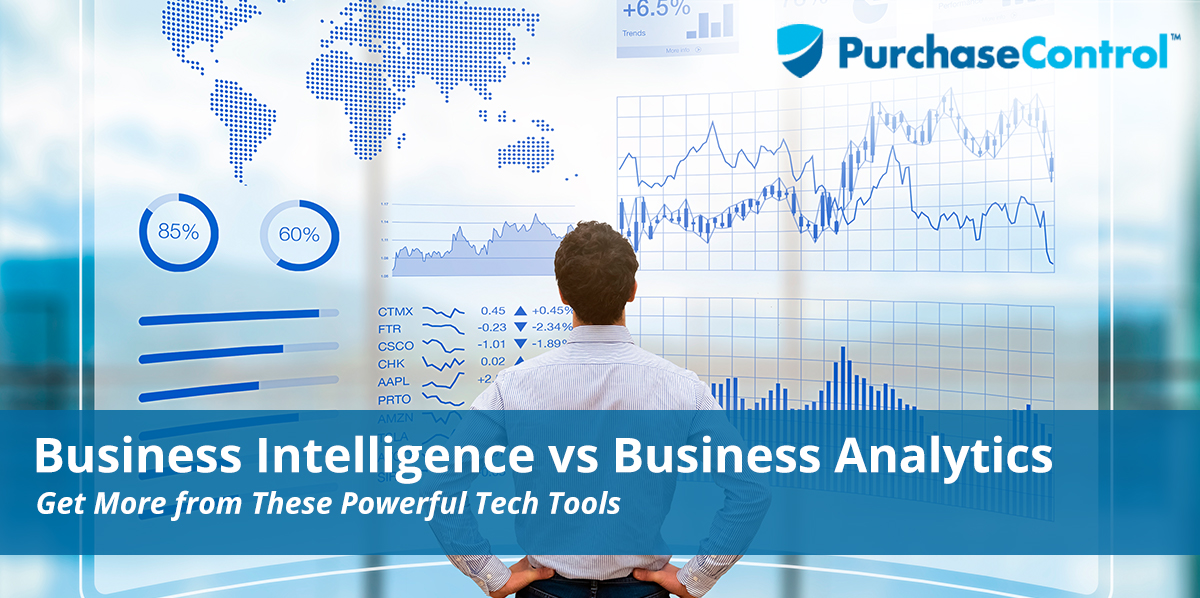As the business environment continues to grow in complexity and scope, organizations around the world have come to embrace advanced technological tools for process improvement, greater profitability, and data-driven competitive and innovation strategies. Two related but distinct concepts—business intelligence (BI) and business analytics (BA)—are especially valuable in the age of big data, as they support more informed decision making and data analysis.
While they share certain key aspects, both business intelligence and business analytics have their respective strengths and weaknesses. Understanding how each of these tools can help your business compete and thrive is essential in crafting effective and informed strategies for success.
Distinguishing Business Intelligence from Business Analytics
At its core, the question of “business intelligence vs business analytics” comes down to a much simpler, if broader, distinction: how vs. why.
Both concepts rely on tools like data mining and predictive analysis to extract strategic value from current and historical data collected from workflows—the business of doing business, so to speak. The insights gleaned from the vast oceans of data generated and collected can be put to use in a number of ways, from process improvement to financial reporting to strategic planning.
But in examining the distinction between how and why, it’s possible to gain a deeper understanding of each tool’s specific strengths and key differences.
Business Intelligence is driven by how (and, quite often, what). Its strengths lie in reporting and analytics as they pertain to supporting and streamline existing operations, i.e. descriptive analysis. Organizations use business intelligence to improve decision making based on insights extracted from performance and operational data.
BI tools are extremely useful for applying selected metrics to massive sets of raw data collected through business process monitoring and data warehousing. They use data mining, online analytical processing (OLAP), and real-time querying for data collection, and its reporting functions are used to visualize actionable insights in an organized and intuitive way.
In this way, BI addresses the hows and whats of business by enabling organizations to dive deep into their own workflows and extract the insights needed to correct errors, streamline inefficiencies, and improve profitability in real time.
Business Analytics is all about the whys of business. While business intelligence tools can provide answers on how to solve existing problems and remove current inefficiencies, business analytics digs into the source of these issues and uses advanced analytics to create predictive and prescriptive models that both anticipate and address problems before they begin.
In addition to advanced analytics tools, BA may also rely on collaborative tools like Google Drive, presentation software with detailed data visualization (e.g. Microsoft Visio), word processing tools, etc.
Using both historical and current data, business analytics relies on data mining to identify past and current business trends, and then uses machine learning to perform predictive modeling. This not only allows a business to anticipate future trends, but to “cherry pick” data sets for ad-hoc reporting, or real-time analysis of targeted questions (e.g., “is a recent slump in sales tied to production problems? A price change? Market forces outside the company’s control?”) and make informed decisions to solve them much more quickly than they could with traditional information management models.
Function | Business Intelligence | Business Analytics |
| Data collection, analysis, and visualization (e.g., data mining and analysis) | YES | YES |
| Process improvements via evaluation of workflows to remove roadblocks and mitigate pain points. | YES | YES |
| Reporting | YES | YES |
| Descriptive data analytics using current data | YES | NO |
| Diagnostic analytics identifying causes of issues uncovered through descriptive analysis | YES | NO |
| Predictive analytics identifying future trends based on historical data | NO | YES |
| Advanced analytics to suggest solutions to issues discovered through data discovery and descriptive analytics | NO | YES |
“Depending on your business needs, it’s possible you could regard business analytics as a subset of the larger business intelligence function—or vice-versa. If that sounds a little strange, remember that every business is different, and ultimately, both business intelligence and business analytics are both useful parts of a unified information management strategy.”
Choosing Between BI and BA
Depending on your business needs, it’s possible you could regard business analytics as a subset of the larger business intelligence function—or vice-versa. If that sounds a little strange, remember that every business is different, and ultimately, both business intelligence and business analytics are both useful parts of a unified information management strategy.
Consider Your Company’s Information Management Needs—and Goals
Much like the distinction drawn between how and why, companies reviewing their information management needs must also consider the questions of past and future.
A BI platform is descriptive; it uses past and current data to generate insights that drive decisions that affect current operations. BA is both predictive and prescriptive; it uses past data to provide the foundation for predictive models that assist in planning for future improvements and suggest solutions designed to aid in overcoming future challenges.
A BI platform can:
- Provide analytics and improved decision-making to businesses of all sizes through self-service BI (SSBI), or applications that incorporate business intelligence with enterprise resource planning (ERP), purchasing software, and accounting packages for in-house performance management, statistical analysis, and improved business decisions. SSBI is focused on being intuitive, approachable, and user-friendly; it doesn’t require an external business analyst or advanced knowledge of data science.
- Provide real-time reporting for established companies with a focus on optimizing current business operations.
- Improve decision-making, productivity, and work process efficiency through actionable insights.
- Provide companies with substantial data warehouses and a need for frequent and varied reporting the tools needed to handle large data sets and produce a range of reporting options at various levels of detail.
- Give business users access to data mining, real-time analysis, OLAP, dashboard creation (visualization of specific data sets), etc.
Business Analytics:
- Provide new or changing companies with powerful analysis tools that use current and historical data to predict future trends.
- Combine optimization of current business processes with strategic anticipation and execution of future opportunities.
- Assist in performing large-scale industry, market, and company analyses in order to create or adjust an effective business model.
- Integrates structured data from ERP or financial software platforms to generate insights into supply chain management, production and operations, and financial planning/reporting.
- Transform raw data into manageable, contextualized data sets used for predictive and prescriptive modeling.
- Uses Strengths, Weaknesses, Opportunities, Threats (SWOT) analysis, examination of usage cases, predictive and prescriptive modeling, functional and nonfunctional requirement analysis, etc.
Get the Best of Both Worlds
Software solutions that offer both business intelligence tools and business analytics will provide your company with the most comprehensive tool kit for applying data science and statistical analysis to your business data. Choosing the right software solution can provide you with both BI tools and business analytics capabilities, allowing you to improve current business processes while still planning for future growth.
When they’re combined in this way, the complete toolset is often referred to as business intelligence analytics, BI analytics, or sometimes simply BIA. Businesses looking to optimize their productivity and efficiency in the present while planning for new opportunities may find that the “one-two punch” of BIA is their best bet for achieving their current and future goals.
Raise Your Information Management IQ
What or why? Optimize today, or get a jump on the future? Whatever your company’s information management and operational improvement priorities, business intelligence and business analytics can help you make better decisions today—and more profitable plans for tomorrow. Make BAI part of your information management strategy, and transform your company’s data into insights that power innovation and efficiency.
Collect Better Data for Smarter Business Decisions In Procurement With PurchaseControl
Find Out How








